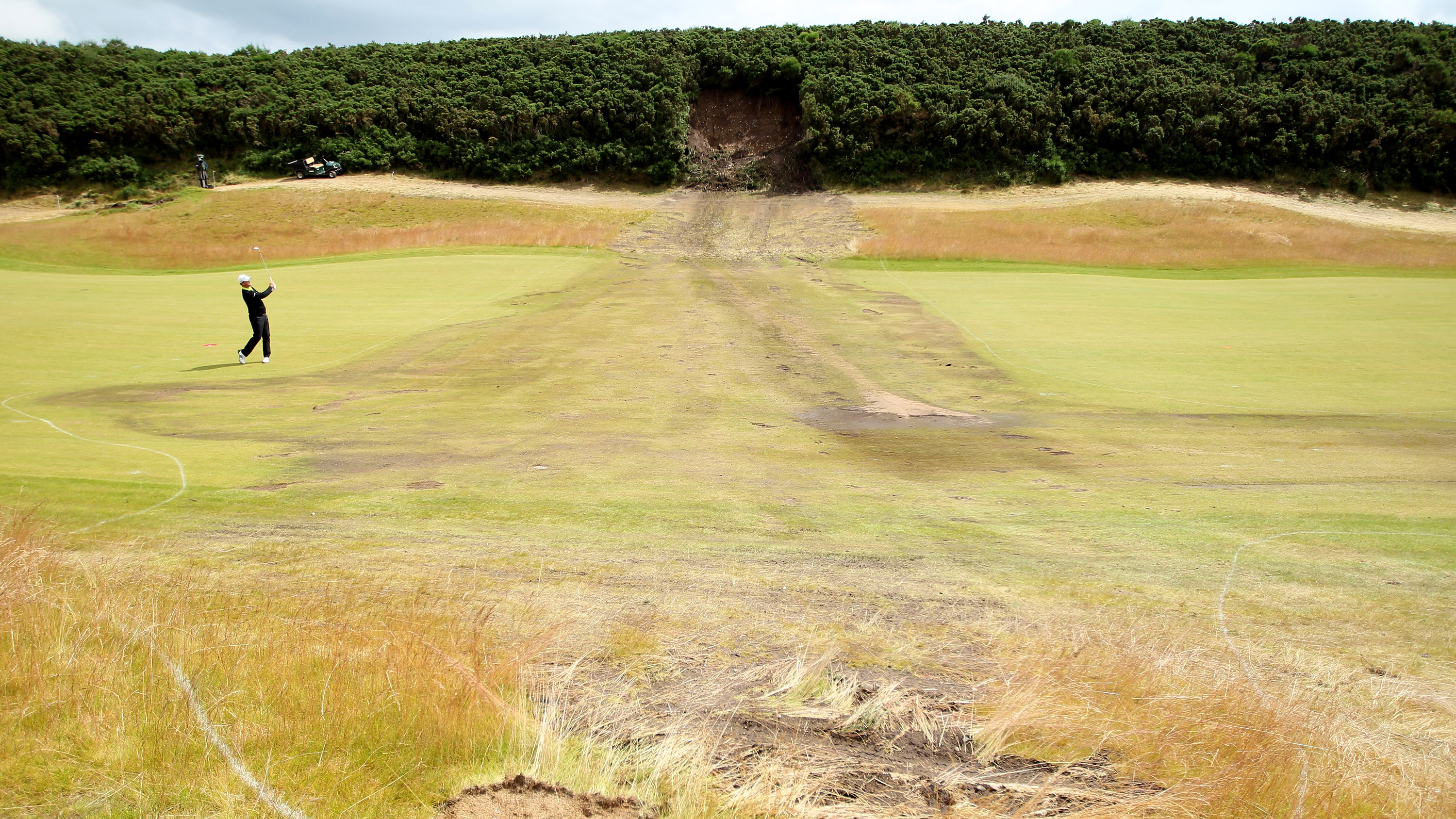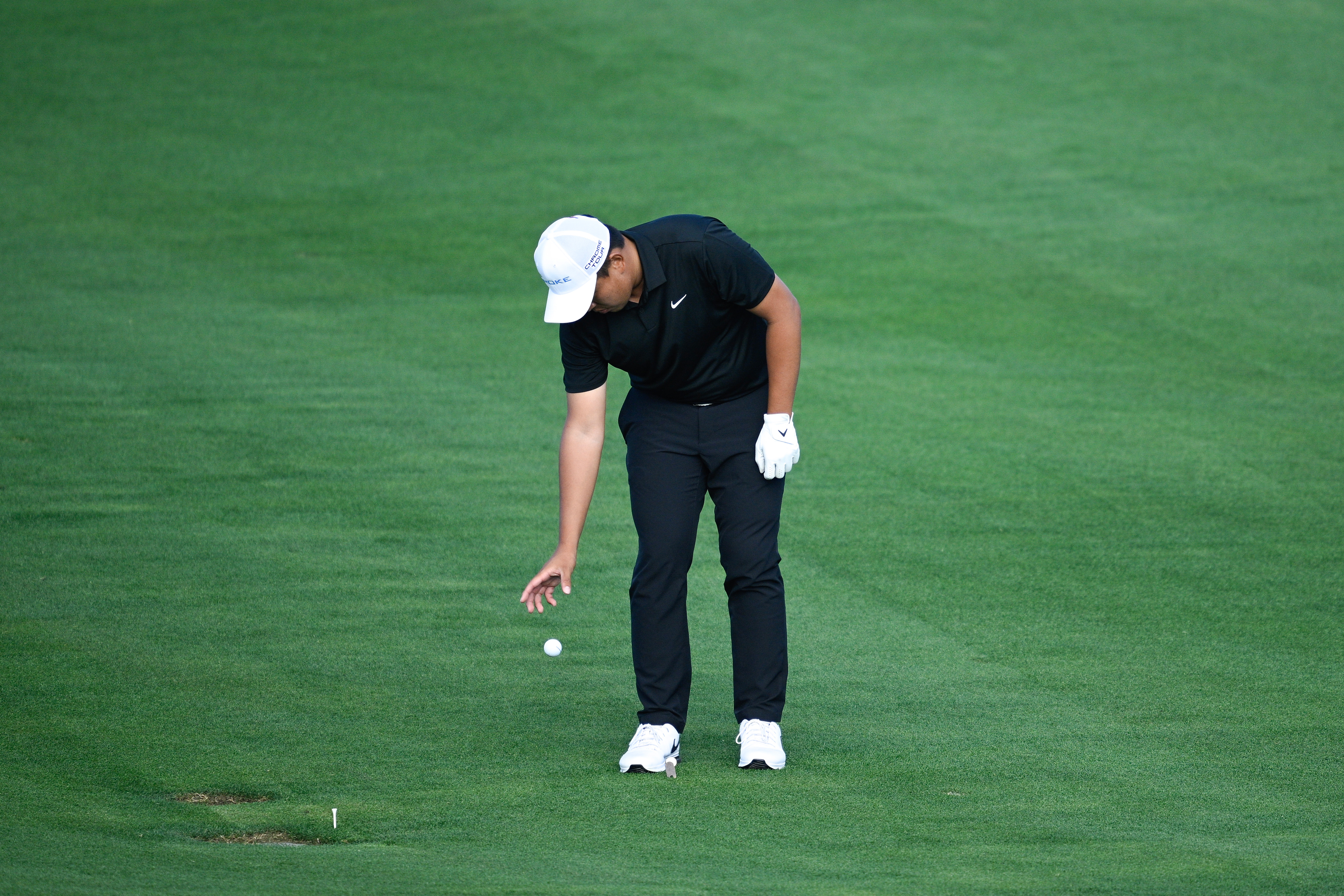Can You Play A Ball From GUR?
If your ball lands in an area marked as ground under repair, do you have to take relief or can you play it as it lies?


The scenario is this – you’ve played your drive down the fairway and you’ve found it on the right side, offering a perfect line into the flag. The ball has come to rest in an area of ground under repair but it’s sitting up like a coconut and you really would rather play it from where it lies rather than taking relief and risking a less favourable lie after you have dropped. What to the Rules say? Can you play it?
Generally speaking, the answer is yes (although there are exceptions, which we’ll come on to.) If your ball is in ground under repair, you may either play it as it lies or take relief through Rule 16.1. Rule 16 deals with Abnormal Ground Conditions and that includes ground under repair.
Under Rule 16.1a, you are entitled to relief if your ball is in or is touching the ground under repair, or if your stance or intended swing is affected by the ground under repair.
Only when you’re on the putting green and there’s an area of ground under repair also on the putting green, you are entitled to relief if the ground under repair is on your line. You don’t get relief from ground of repair on your line if your ball is not on the putting green.
If you choose to take relief from ground under repair, you must take complete relief so that the ground under repair no longer interferes with your lie, stance area or intended swing.
When you can’t play a ball from GUR.

Dropping away from abnormal ground condition
If the ground under repair is in a “No Play Zone,” from which the committee has prohibited play, you are not allowed to play the ball as it lies. This is covered by Rule 16.1f. It says that relief must be taken from interference by a no play zone in abnormal course condition (which would be ground under repair.) If your ball is in a no play zone in or on ground under repair in the general area, in a bunker or on the putting green, you must take relief.
Also, if the ground under repair in an area deemed a no play zone interferes with your stance area or intended swing, you must take relief.
Get the Golf Monthly Newsletter
Subscribe to the Golf Monthly newsletter to stay up to date with all the latest tour news, equipment news, reviews, head-to-heads and buyer’s guides from our team of experienced experts.
Basically then – You can play the ball as it lies in ground under repair unless it is a “No Play Zone.” If you were to play the ball from the wrong place, in breach of this Rule (16.1) you would receive the General Penalty, two strokes, under Rule 14.7a.

Fergus is Golf Monthly's resident expert on the history of the game and has written extensively on that subject. He has also worked with Golf Monthly to produce a podcast series. Called 18 Majors: The Golf History Show it offers new and in-depth perspectives on some of the most important moments in golf's long history. You can find all the details about it here.
He is a golf obsessive and 1-handicapper. Growing up in the North East of Scotland, golf runs through his veins and his passion for the sport was bolstered during his time at St Andrews university studying history. He went on to earn a post graduate diploma from the London School of Journalism. Fergus has worked for Golf Monthly since 2004 and has written two books on the game; "Great Golf Debates" together with Jezz Ellwood of Golf Monthly and the history section of "The Ultimate Golf Book" together with Neil Tappin , also of Golf Monthly.
Fergus once shanked a ball from just over Granny Clark's Wynd on the 18th of the Old Course that struck the St Andrews Golf Club and rebounded into the Valley of Sin, from where he saved par. Who says there's no golfing god?
-
 I Think I've Found My New Favorite Club Of 2025 And It Might Surprise You
I Think I've Found My New Favorite Club Of 2025 And It Might Surprise YouPGA Pro and driver expert Joe Ferguson has been testing out the latest of TaylorMade’s ‘retro’ mini-driver offerings, the R7 Quad Mini, and it didn't disappoint…
By Joe Ferguson
-
 Emotional Bryson DeChambeau Recreates 'The Shot Of My Life' At Pinehurst No.2 As Plaque Unveiled Day After Masters Charge Fizzles Out
Emotional Bryson DeChambeau Recreates 'The Shot Of My Life' At Pinehurst No.2 As Plaque Unveiled Day After Masters Charge Fizzles OutThe 2024 US Open champion travelled over to North Carolina a day after watching Rory McIlroy win The Masters to recreate the shot which helped the American down the Northern Irishman at Pinehurst last summer
By Jonny Leighfield